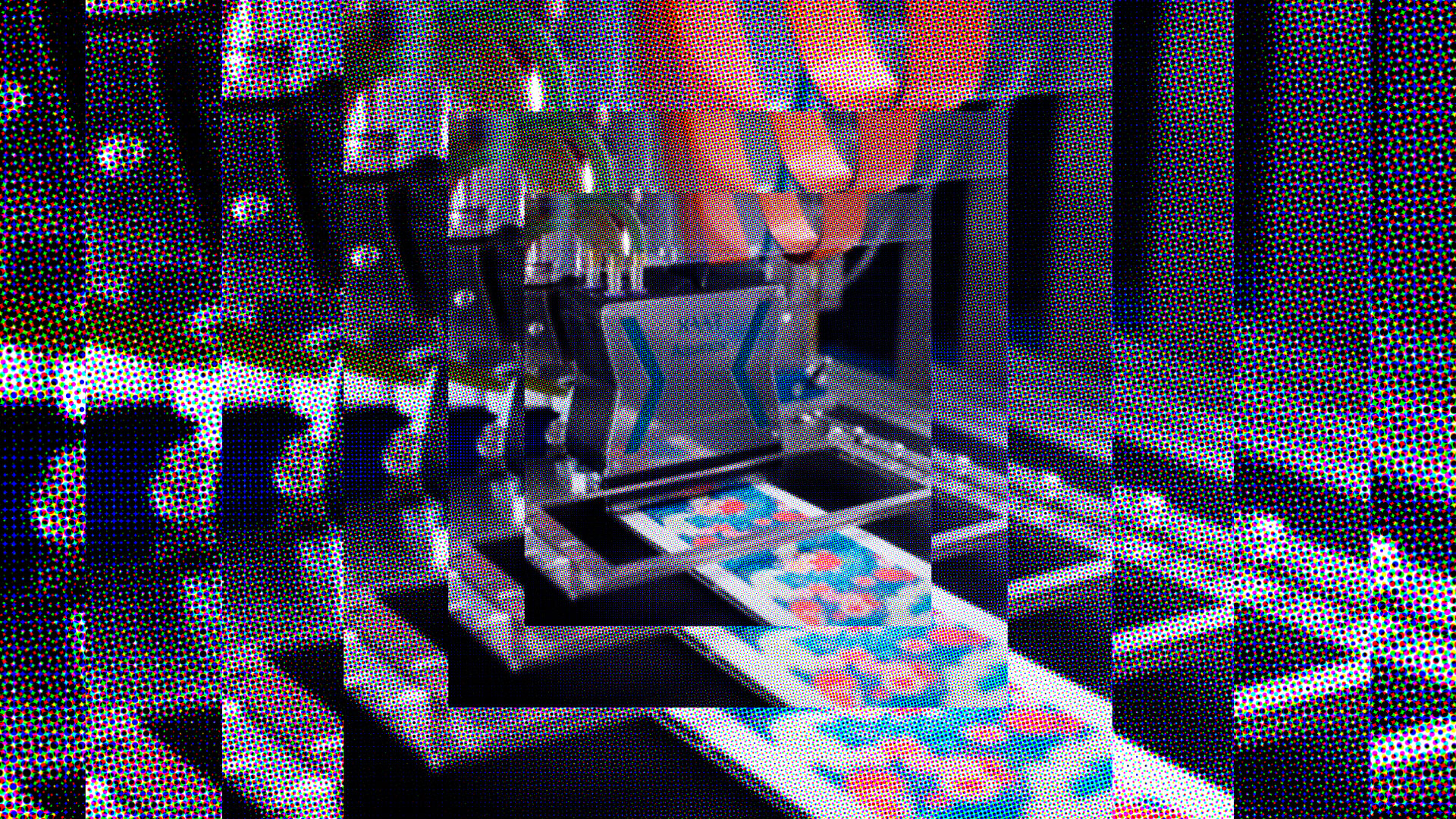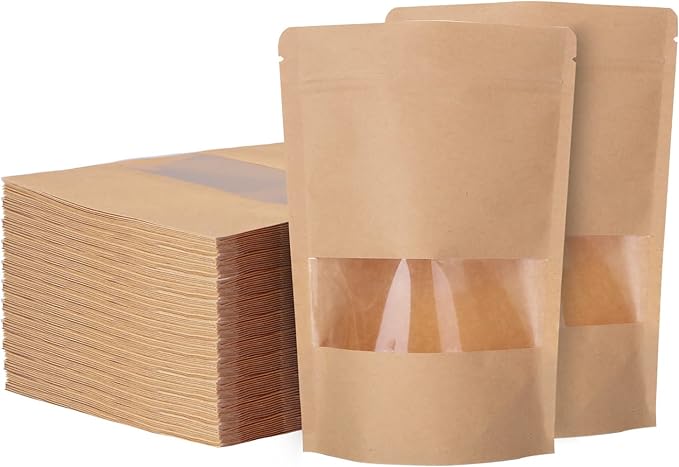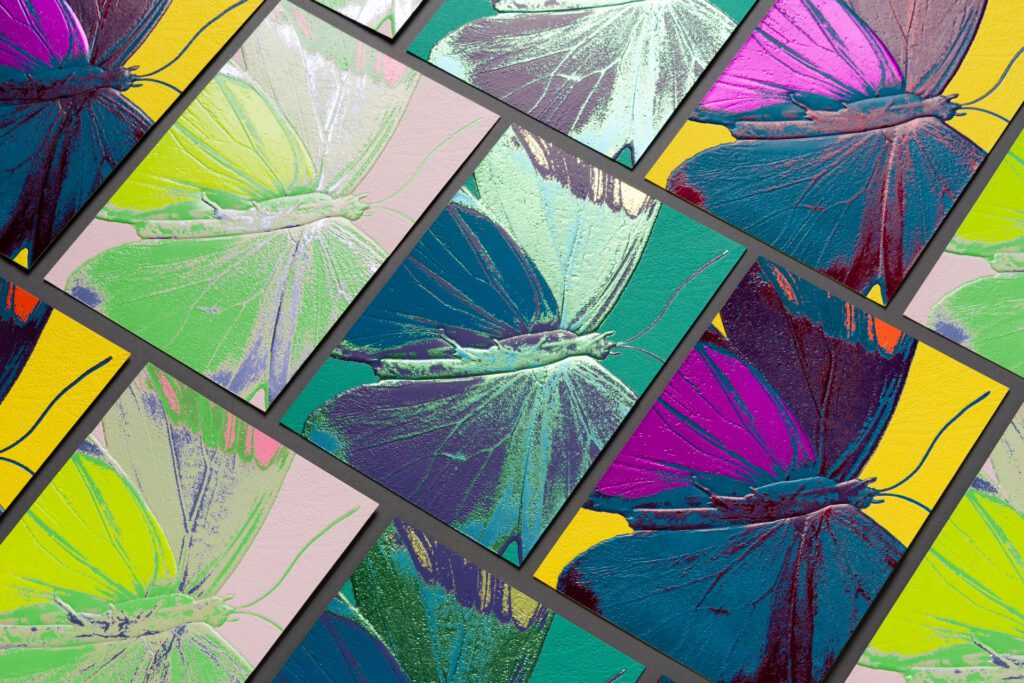Let’s be honest: most people think of ink as that stuff you spill on your shirt when your pen leaks. But in the print world? Ink is where the real alchemy happens.
At Flyleaf, we team up with a carefully chosen network of print partners who share our appreciation for craft and a problem-solving mindset. Print experts who not only know their way around substrates, speciality techniques, and boundless application possibilities but who never stop investing in smarter technology..
In today’s article, we’re diving into some of the finest new ink technologies in all their glory — yes, inks can be exciting!
Whether you’re here to geek out or just wondering what’s behind that crisp, vivid finish, welcome. You’re in the right place.
Time to dive in—it’s going to get colorful.
Aqueous Inks: High Viscosity, High Impact
Aqueous inks used to get a bad rap—too fussy, too slow, not punchy enough. But thanks to some serious science (shoutout to the Welsh Centre for Printing and Coating at Swansea University), high-viscosity aqueous inks are staging a full-blown comeback. In a peer-reviewed study, researchers compared these thicker aqueous inks (developed by Nazdar) with conventional formulations using Xaar’s Aquinox printheads. The results? More color, less energy. Richer density—up to 67% improvement on coated white corrugated boards. And a surprising bonus: faster drying and better print efficiency across large and wide format paper-based printing. Translation: it’s ink that performs—with less environmental cost and more visual payoff.
Eco-Solvent Inks: Tough, Bright, and Kind to Noses
Need color that pops and stands up to the weather? Eco-solvent inks can be your new best friend. These inks are waterproof, scratch-resistant, and hold their own under sunlight, wind, and the general chaos of outdoor life. Think trade show graphics, banners, and durable vinyl signage. But here’s what really makes them shine: they’re low-odor (a win in tight, unventilated spaces), gentle on the printer hardware, and still pack a visual punch.
Latex Inks: The Flexible All-Rounder
Latex inks have been making waves thanks to brands like HP, Epson, and Roland—and for good reason. They dry fast, stick to a huge variety of substrates, and deliver stunning, sharp image quality. They’re also a go-to for signage in places like grocery stores or restaurants, where odorless printing isn’t just nice—it’s non-negotiable. These water-based inks have minimal environmental impact, making them a top choice for print projects that need to look good and want to do good. Plus, their versatility means they play well across both indoor and outdoor formats—without compromising on color or clarity.
Dye-Sublimation Inks: From Fabric to Fame
If you’ve worn a sports jersey, hugged a branded throw pillow, or ordered a custom tote bag recently—you’ve probably come into contact with dye-sublimation inks. These inks are heat-activated and work like magic: under pressure and heat, the dye becomes gas, bonds to polyester-based substrates, and creates permanent, high-res color that won’t flake, peel, or fade. It’s the go-to tech for digital textile printing, custom apparel, soft signage, and just about every promotional item under the sun. With more brands looking to elevate their merch game, dye-sub is scaling up fast. Bonus: it’s also opening the door for wild creative possibilities, especially when combined with new direct-to-substrate tech.
UV Gel Inks: The Fast Lane of Large Format
Canon’s UV Gel tech is kind of a unicorn: fast, accurate, and built for serious volume. By separating the ink jetting and curing processes, it achieves vibrant color at high speeds—without the usual drying bottlenecks or banding issues. This tech is a game-changer for display graphics and other large-format needs. It enables precise image quality while reducing ink usage and waste. Plus, the prints are instantly dry and super durable, so they’re ready to go straight off the machine.
If latex is the versatile all-rounder, UV Gel is the speed freak with a surprisingly delicate touch.
Print may start with paper, but it comes to life through ink
Whether you’re planning on printing on vinyl, fabric, corrugated board, or something weird and wonderful, the ink you choose can make or break the result. At Flyleaf, we’re endlessly curious about the materials and technologies behind great print—and we love working with partners who are just as driven to explore, test, and refine. So next time you admire a crisp foil edge or a color that somehow glows off the page, remember: that impact started with a very smart ink decision.


